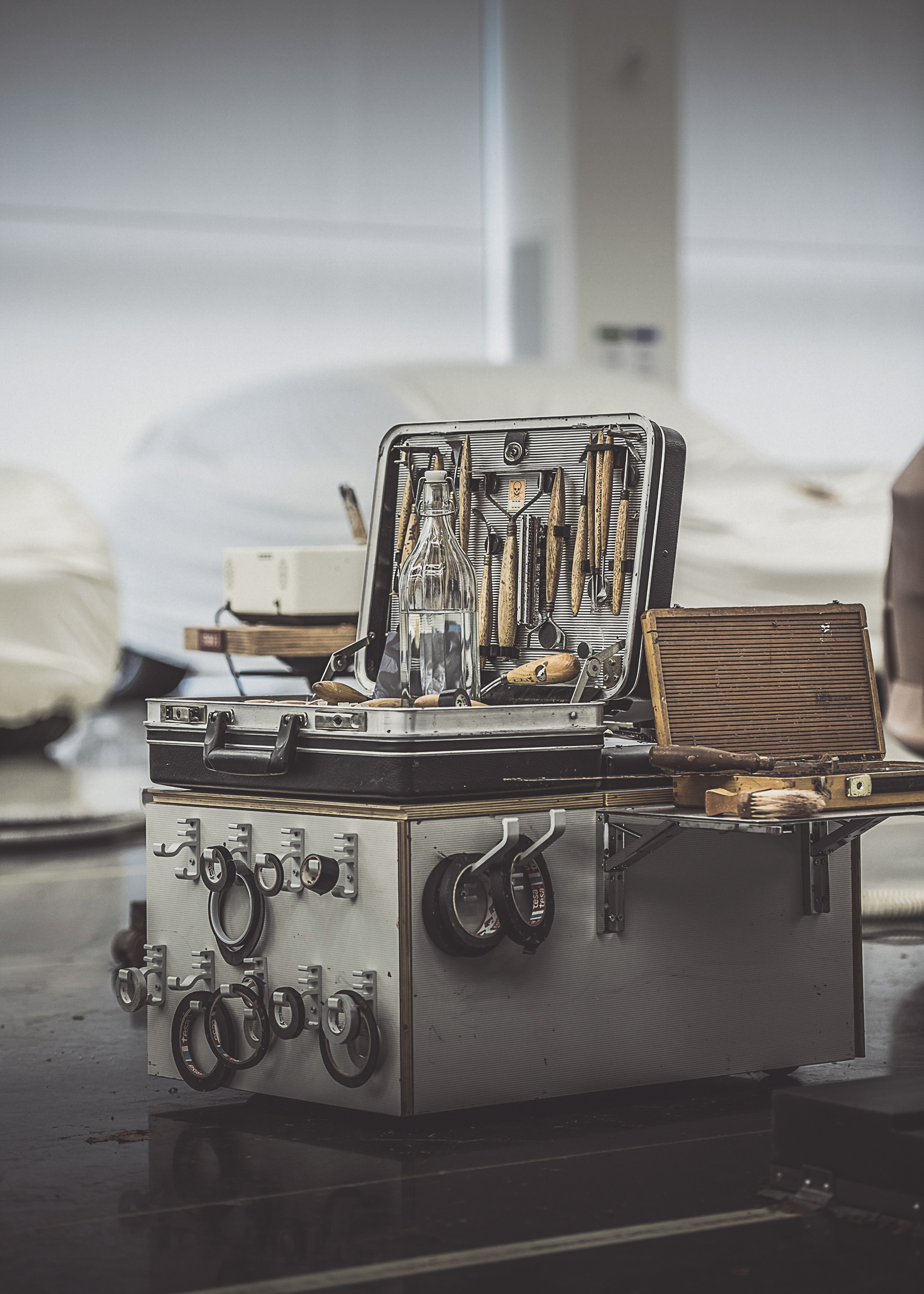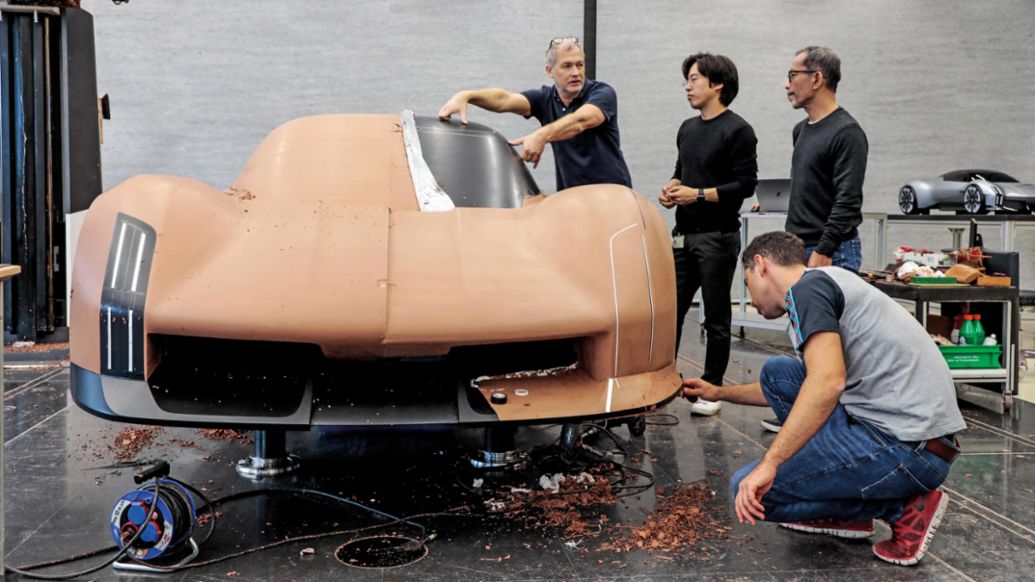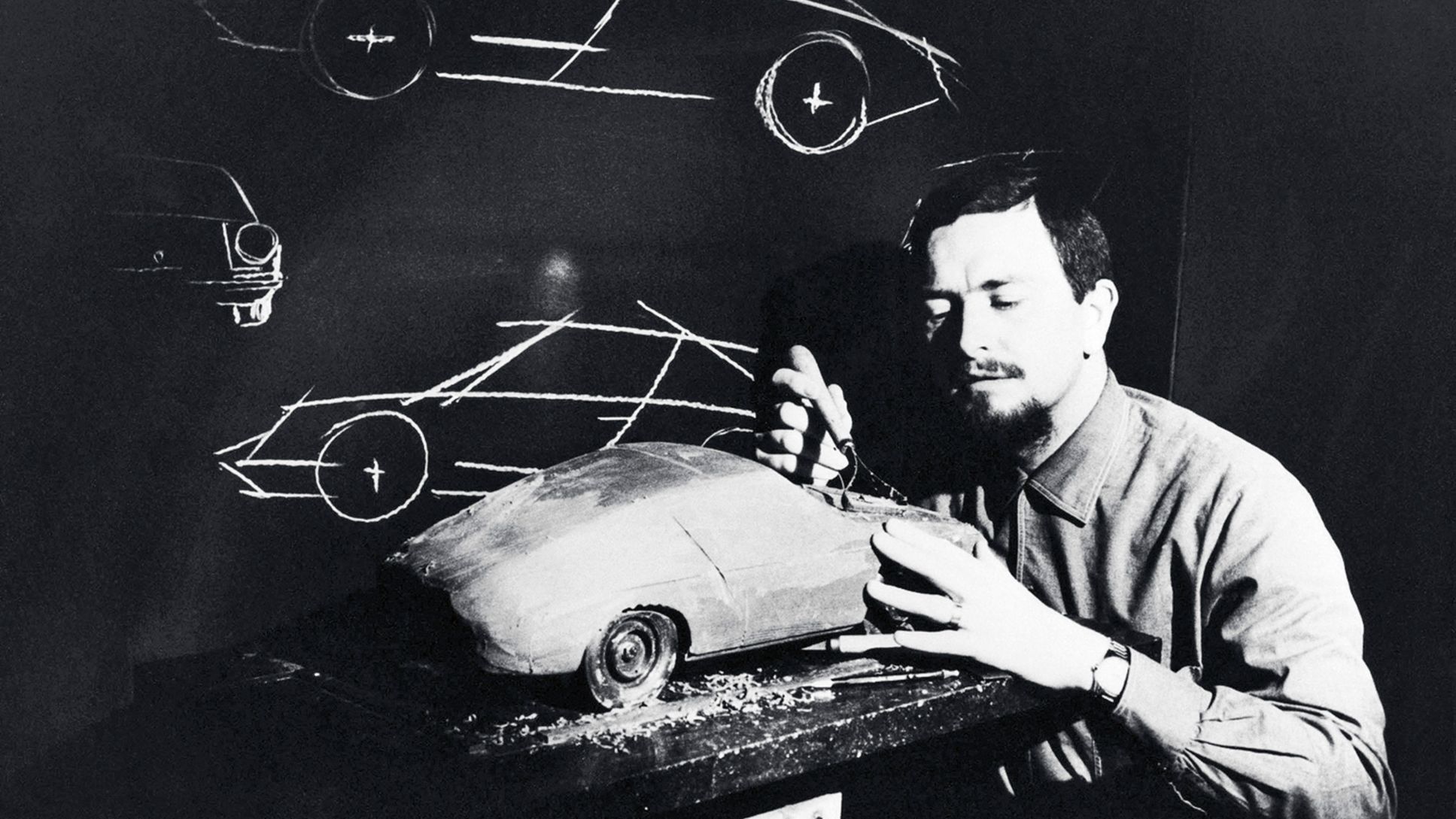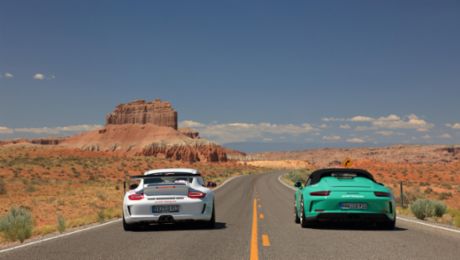Metal blades and scrapers, delicate wire loops, wooden sculpting tools, and brushes – this suitcase contains more than a hundred instruments. But what they’re used for is not immediately clear. They’re the tools of a modeler, at the exterior studio of Style Porsche, who is responsible for producing clay models of future sports cars– one of the first steps on the path to making a vision a reality. This suitcase is one of a kind, as each of the approximately 50 Porsche modelers puts together their own selection. The shape experts sometimes even produce tools of their own to meet their personal needs.

Once Michael Mauer, Vice President Style Porsche, and Peter Varga, Director of Exterior Design, have chosen a selection of their designers’ sketches, up to ten models at a scale of 1 : 3 are created for the internal competition. The teams of designers and modelers transform their initial designs into three-dimensional forms.
While Porsche also uses photorealistic simulations based on CAD data and virtual reality software, clay models play an essential role in sports car development, as they not only provide a highly sensory impression of the typical interplay of concave and convex shapes, but also allow modelers to more quickly implement the many changes inherent in the design process. Their hands are the perfect complement to the designers’ eyes.
Pinnacle of clay art using photogrammetry
What is commonly referred to as a clay model, and even feels like one, is, in actuality, made from industrial plasticine. Large bars of the modeling mass are stored at exactly 60 degrees Celsius in the studio oven, which maintains a consistency similar to that of soft butter. The plasticine hardens at room temperature and can be processed. A total of 100 kilograms of plasticine is applied by hand to a frame of wood and rigid foam to create a 1 : 3 model. For 1 : 1 models, it takes up to 1,200 kilograms.

The modeler uses shaping tools to remove material, form edges, and smooth surfaces as well as tapes and films to accentuate important lines and produce headlights and windows. The internal selection process ends with two full-size designs, which are then modeled, covered with special films, and painted. A single model may have two different sides to present different design or equipment variations. On the path to series maturity, the experts record the dimensions using photogrammetry. The 3D data serves as the foundation for the rest of the digital development process.
It can take six months to form the 1 : 1 model, which is extremely realistic. In fact, it’s just about impossible to tell the difference between an actual vehicle and a model during presentations. That’s the pinnacle of clay art.
Info
Text first published in the Porsche magazine Christophorus 409.
Author: Alexandra Knaupp
Photos: Stefan Bogner, Porsche
Copyright: All images, videos and audio files published in this article are subject to copyright. Reproduction in whole or in part is not permitted without the written consent of Dr. Ing. h.c. F. Porsche AG. Please contact newsroom@porsche.com for further information.


